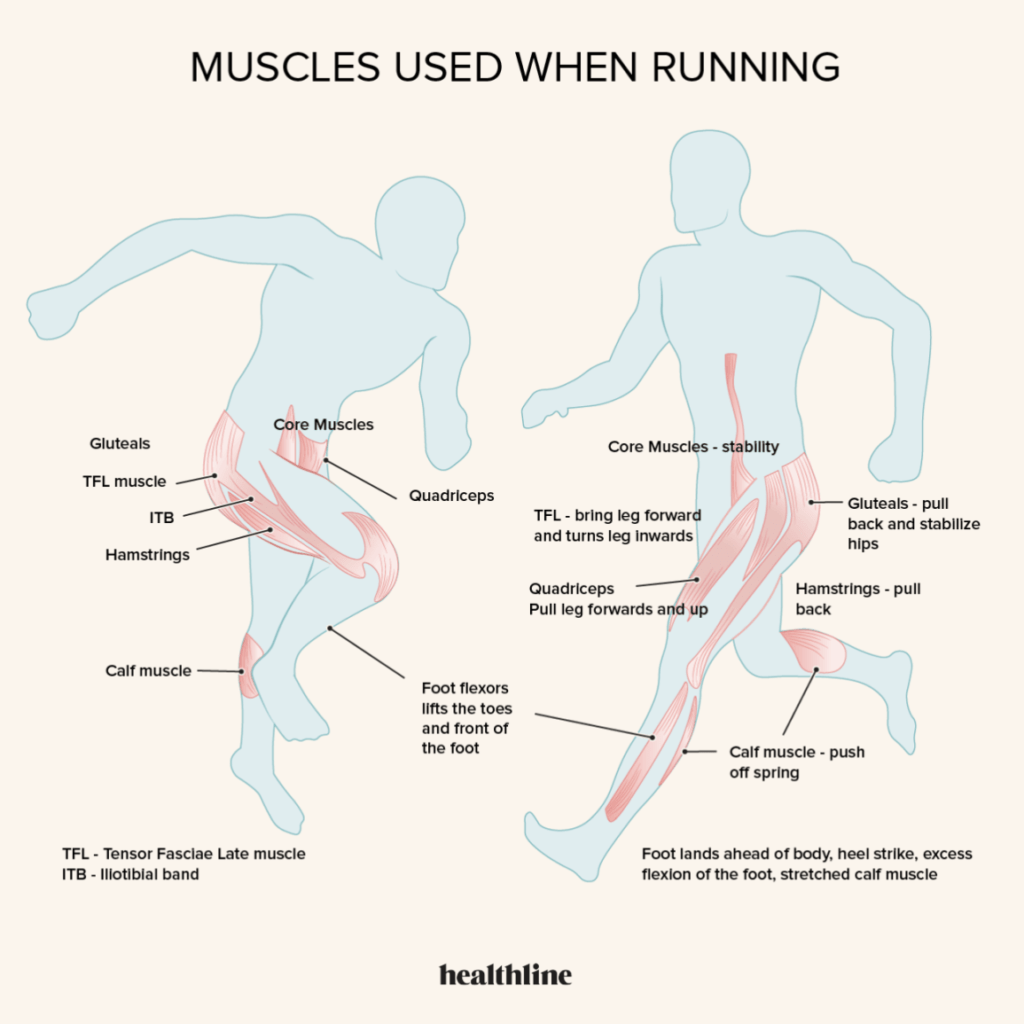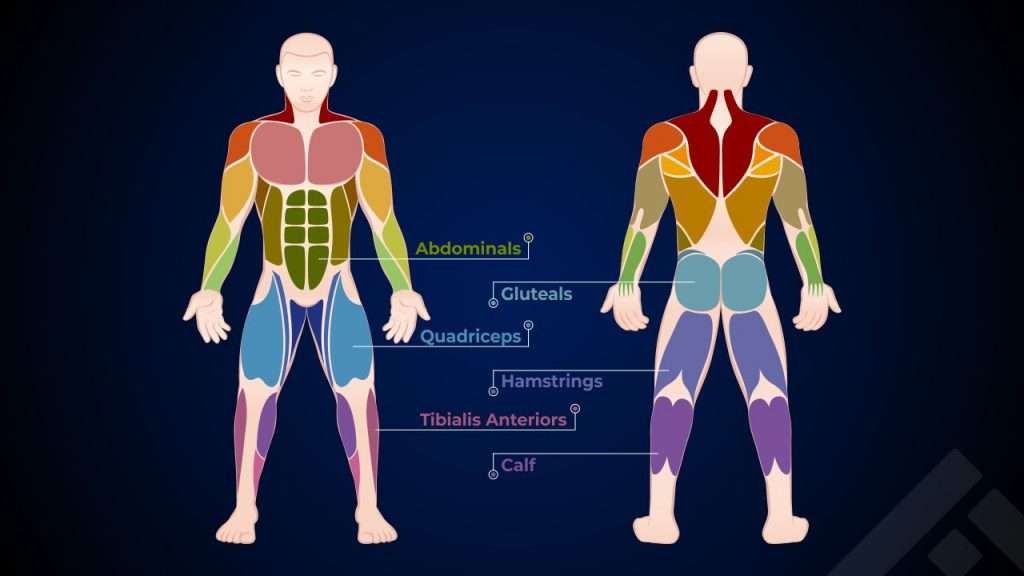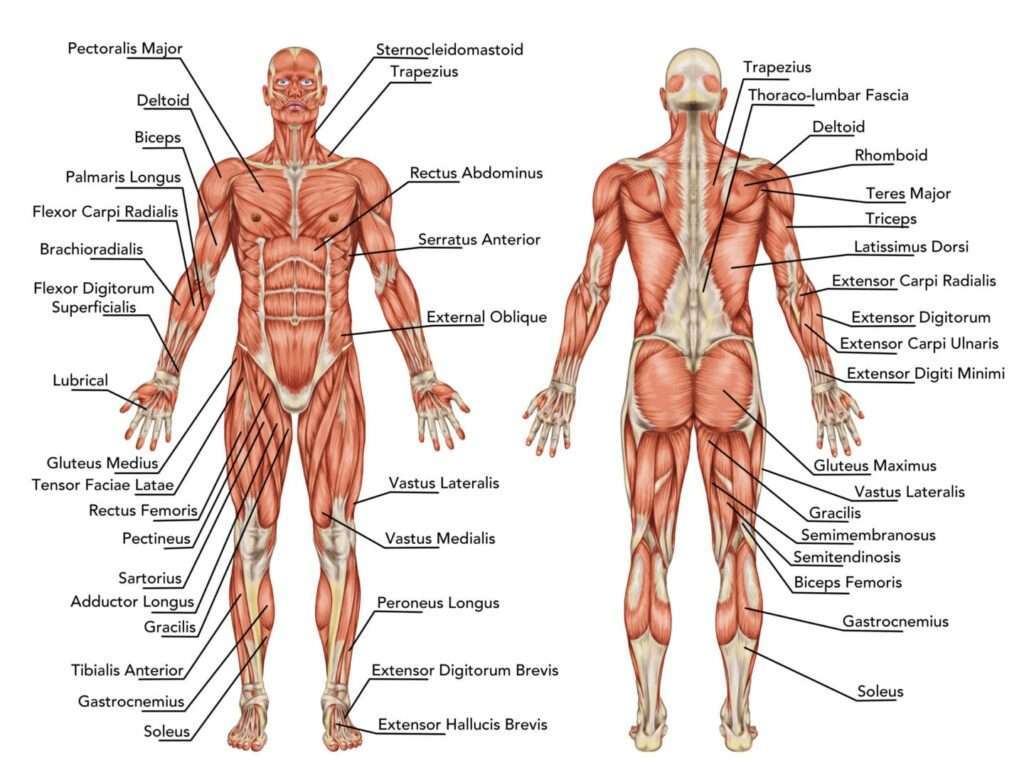Have you ever wondered which muscle groups work the hardest when you’re out for a run? In this article, we will explore the different muscle groups that are most engaged during running. From your powerful quadriceps to your stabilizing core muscles, we’ll take a closer look at how your body works together to propel you forward and keep you moving. Whether you’re a seasoned runner or just starting out, understanding the importance of these muscle groups can help you improve your running form and overall performance. So, lace up your shoes and get ready to discover the muscle groups that keep you powering through every stride.

Leg Muscles
Quadriceps
The quadriceps, located in the front of your thighs, play a crucial role in running. These muscles consist of four separate heads, hence the name “quadriceps.” When you run, your quadriceps contract and extend your knee joints, propelling you forward with each stride. These muscles provide the power and strength necessary to maintain a consistent pace and handle the impact of each step.
Hamstrings
Situated on the back of your thighs, the hamstrings act as a counterbalance to your quadriceps. As you run, your hamstrings work in tandem with your quadriceps to flex your knee joints and extend your hips. This motion is essential for generating force and propelling your body forward. Strong hamstrings help prevent injuries such as hamstring strains and can significantly improve your running performance.
Calves
The calf muscles, comprised primarily of the gastrocnemius and soleus, are located at the back of your lower legs. These muscles play a vital role in running as they assist in plantar flexion, which is the motion of pointing your toes downward. As you push off the ground during each stride, your calves contract to provide the necessary force. Strong calves improve your running efficiency and contribute to better speed and endurance.
Glutes
The gluteal muscles, commonly known as the glutes, are the largest muscles in the body. They include the gluteus maximus, gluteus medius, and gluteus minimus. These muscles are responsible for hip extension, abduction, and rotation, all fundamental movements when running. Engaging the glutes helps generate power and contributes to proper running form. Strong glute muscles assist in stabilizing the pelvis and reducing the risk of injuries, such as iliotibial band syndrome and knee pain.
Core Muscles
Abdominals
Your abdominal muscles, consisting of the rectus abdominis, transverse abdominis, and the obliques, provide stability and support while running. These muscles help maintain proper posture and control movements of the trunk and pelvis. Engaging your abdominals while running helps reduce excessive movement and prevents energy wastage. A strong core also contributes to overall body control and balance, enhancing your running efficiency.
Back Muscles
The back muscles, including the erector spinae, facilitate the extension and stabilization of the spine. These muscles work in conjunction with the abdominal muscles to maintain an upright posture and balanced alignment while running. Strong back muscles provide support and help prevent lower back pain and other related injuries during long-distance running.
Arm and Shoulder Muscles
Biceps
While arm muscles may not be directly involved in the movement of your lower body when running, they play a crucial role in maintaining balance and efficient arm swing. The biceps, located in the front of your upper arms, assist in the flexion of your elbows. Coordinated arm movements enhance your running rhythm and help propel you forward by generating additional momentum.
Triceps
Situated on the back of your upper arms, the triceps act as antagonists to your biceps during running. These muscles work to extend your elbows as your arms swing back and forth. Effective arm extension helps maintain a balanced movement pattern while running and can contribute to overall running efficiency.
Deltoids
The deltoid muscles, located at the shoulders, are responsible for multiple movements involved in running. These muscles assist in arm flexion, abduction, and rotation, all of which contribute to a controlled arm swing. Proper coordination of the deltoids helps maximize arm movement and enables the transfer of energy through the upper body and down to the lower body while running.
Hip Muscles
Hip Flexors
The hip flexor muscles consist of several muscles, including the psoas major, iliacus, and rectus femoris. These muscles are responsible for flexing your hip joint, enabling you to lift your leg forward during each stride. Strong and flexible hip flexors increase your running stride length and improve your overall running performance.
Hip Abductors
The hip abductor muscles, such as the gluteus medius and gluteus minimus, work to move your leg away from the center of your body. These muscles play a crucial role in maintaining proper running form and preventing excessive inward collapse of the knee (known as knee valgus). Engaging your hip abductors while running helps stabilize your pelvis and maintain alignment throughout your stride.
Hip Adductors
Situated on the inner thigh, the hip adductors include muscles such as the adductor longus, adductor brevis, and adductor magnus. These muscles are responsible for bringing your leg back toward the centerline of your body. While running, the hip adductors assist in maintaining balance and stability, preventing excessive hip drop and promoting proper alignment.

Back Muscles
Trapezius
The trapezius muscle, commonly referred to as the traps, spans the upper back and neck. While running, the trapezius helps stabilize and control movement of the shoulder blades. This muscle group assists in maintaining proper arm swing and overall upper body posture during running.
Latissimus Dorsi
The latissimus dorsi, often referred to as the lats, are large muscles located on either side of the back. These muscles help stabilize the spine and assist in arm movement during running. Engaging the lats aids in maintaining proper posture, ensuring optimal running form and minimizing the risk of injuries.
Chest Muscles
Pectoralis Major
The pectoralis major, or pecs, are the primary muscles of the chest. While running, these muscles assist in stabilizing the shoulders and upper body, playing a role in arm movement. Strong and well-developed pectoralis major muscles contribute to overall upper body strength and endurance during running.
Pectoralis Minor
Located beneath the pectoralis major, the pectoralis minor is a smaller muscle that also contributes to shoulder stability and movements associated with running. Engaging the pectoralis minor assists in maintaining proper posture and optimizing running mechanics.

Ankle Muscles
Tibialis Anterior
The tibialis anterior, situated on the front of your lower leg, is responsible for dorsiflexion. This motion involves pulling your foot upwards towards your shin. While running, the tibialis anterior helps lift the foot off the ground, allowing for an effective toe-off phase of the stride. Strong and properly conditioned tibialis anterior muscles can help prevent foot and ankle injuries, such as shin splints.
Gastrocnemius
The gastrocnemius, one of the major calf muscles, plays a crucial role in running by connecting the foot to the back of the knee joint. This muscle works to generate power during push-off, aiding in the propulsion forward. It also assists in absorbing shock upon landing with each stride. Maintaining strong and flexible gastrocnemius muscles helps optimize running performance while reducing the risk of calf strains or Achilles tendon injuries.
Soleus
The soleus muscle, located beneath the gastrocnemius, also contributes to the movements involved in running. As a powerful plantar flexor, the soleus works alongside the gastrocnemius to generate force when propelling forward during push-off. It helps stabilize the foot and ankle throughout the running stride, contributing to overall running efficiency and injury prevention.
Foot Muscles
Intrinsic Foot Muscles
The intrinsic foot muscles are the muscles located within the foot itself. These muscles play a crucial role in maintaining foot arches, providing stability, and absorbing forces during running. They contribute to proper foot alignment and support, enhancing overall running biomechanics and preventing common foot conditions.
Extrinsic Foot Muscles
The extrinsic foot muscles are located outside the foot and extend into the lower leg. These muscles, including the tibialis posterior and peroneus longus, help control foot movements and maintain proper running mechanics. Strong and properly conditioned extrinsic foot muscles can contribute to improved foot stability, pronation control, and overall running performance.

Cardiovascular System
Heart
When you run, your cardiovascular system works tirelessly to supply oxygen-rich blood to your muscles. The heart, a powerful muscular organ, beats faster and pumps a larger volume of blood during exercise. This increased blood circulation delivers oxygen and nutrients to your working muscles, helping fuel your running efforts. Regular cardiovascular exercise, such as running, strengthens the heart muscle and improves its efficiency, leading to overall cardiovascular health benefits.
Lungs
The lungs are another essential component of the cardiovascular system that plays a crucial role in running. When you run, your breathing rate increases, allowing your lungs to take in more oxygen. The inhaled oxygen is then transported through the bloodstream to the working muscles. Efficient lung function and capacity are vital for maintaining oxygen supply and facilitating optimal running performance.
Core Stability Muscles
Transverse Abdominis
The transverse abdominis, located deep within the abdominal wall, is often referred to as the body’s natural weightlifting belt. This muscle acts as a corset, providing stability and support to the spine and pelvis. Engaging the transverse abdominis while running helps maintain core stability, enhancing overall running form and reducing the risk of lower back pain and other related injuries.
Obliques
The obliques, consisting of the internal and external obliques, contribute to rotational movements and lateral stability during running. These muscles, situated on the sides of the abdomen, work to maintain proper trunk alignment and assist in controlling hip movements. Strong oblique muscles help prevent excessive rotation and enable efficient transfer of force from the upper body to the lower body while running.
Erector Spinae
The erector spinae muscles, located along the spine, are responsible for spinal extension and maintaining upright posture during running. These muscles work in conjunction with the abdominals to stabilize the spine and enable proper trunk alignment. Engaging the erector spinae muscles helps prevent excessive spinal flexion and promotes efficient running mechanics.
In conclusion, running engages numerous muscle groups throughout your body. From the leg muscles responsible for propelling you forward to the core stability muscles maintaining proper alignment, each muscle group plays a vital role in optimizing your running performance and reducing the risk of injuries. By understanding the importance of these muscles and incorporating exercises to strengthen and condition them, you can improve your running efficiency, endurance, and overall enjoyment of this fantastic form of exercise.
